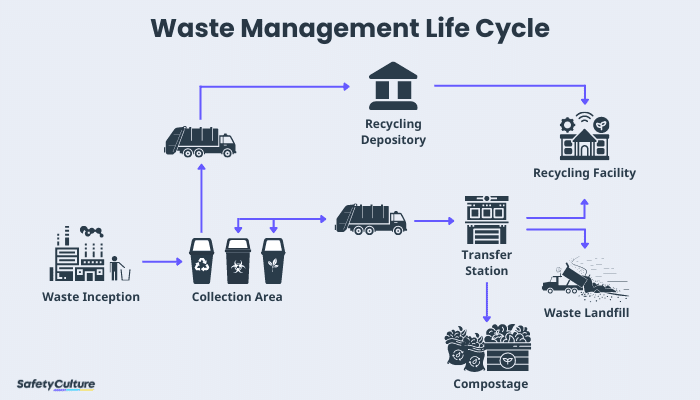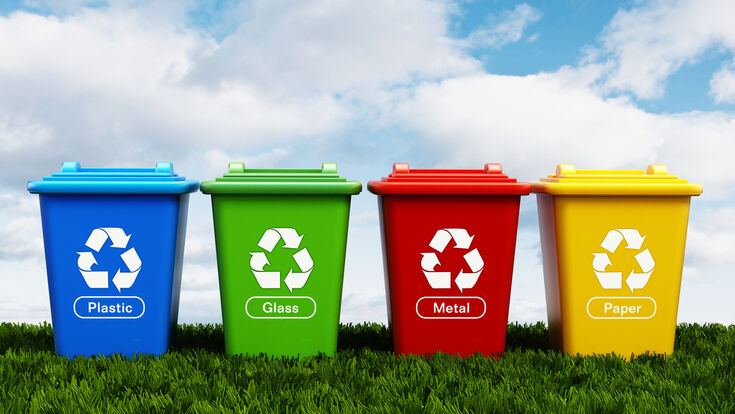Recognizing the Category and Handling of Numerous Kinds of Waste
Effective waste monitoring is crucial for environmental sustainability, calling for a thorough understanding of the category and handling of various waste types. Household waste, industrial by-products, unsafe products, electronic refuse, and natural residues each require distinctive methods to ensure security and decrease ecological damage.

Home Waste
Household waste, including a broad selection of discarded products created from day-to-day living activities, stands for a substantial element of the general waste stream - recycling lives services. This group includes natural waste such as food scraps, backyard trimmings, and paper items, along with not natural materials like plastics, steels, and glass. The varied nature of home waste necessitates efficient classification and administration to reduce ecological effect and advertise sustainable living practices
Efficient family waste management starts with segregation at the resource, promoting recycling, composting, and safe disposal. Organic waste, as an example, can be composted to generate nutrient-rich soil amendments, decreasing garbage dump concern and boosting soil health. Recyclable products, including paper, glass, and particular plastics, can be refined and repurposed, saving resources and lowering energy usage associated with new material manufacturing.
In addition, harmful home waste such as batteries, digital gadgets, and cleaning chemicals requires specialized managing to avoid dirt and water contamination. Public recognition campaigns and convenient disposal options play vital duties in making certain proper disposal and recycling of these products. By implementing durable waste reduction strategies and cultivating area involvement, municipalities can considerably ease the environmental impact of household waste.
Industrial Waste
Hazardous waste, a major contributor to international waste generation, incorporates a varied variety of products generated by manufacturing, building, and various other commercial tasks. This classification consists of byproducts such as scrap metal, plastics, rubber, chemicals, and various other residues. The make-up and volume of commercial waste can differ dramatically relying on the industry and manufacturing processes entailed. Effective administration of commercial waste is critical for minimizing ecological impact and advertising sustainable methods.
The handling of industrial waste commonly entails numerous procedures: collection, disposal, treatment, and segregation. Collection systems are developed to successfully gather waste materials from numerous sources within an industrial operation. Partition is critical, as it makes certain recyclable products are separated from non-recyclable ones, which can be guided in the direction of proper recycling or disposal networks. Treatment processes, consisting of physical, chemical, and organic methods, are employed to minimize the toxicity, volume, and environmental impact of the waste. Ultimately, disposal methods like landfilling or incineration are made use of for waste that can not be reused or treated.
Taking on techniques such as waste reduction, source healing, and recycling can substantially lower the concern of hazardous waste on the atmosphere, adding to even more lasting industrial practices.
Hazardous Waste

Harsh wastes can damage or destroy living products and cells. Combustible wastes can easily ignite, posturing fire hazards, while reactive wastes can cause surges or launch poisonous gases upon contact with other substances.
Effective hazardous waste monitoring includes a number of essential practices: recognition and partition of hazardous products, safe transport and storage, and appropriate therapy and disposal. Treatment methods might consist of chemical incineration, neutralization, and stablizing. Regulatory conformity is essential, led by structures such as the Source Preservation and Recuperation Act (RCRA) in the USA, which makes sure ecologically sound and secure administration of contaminated materials.
Digital Waste
Digital waste, often abbreviated as e-waste, represents a growing obstacle in waste monitoring as a result of the fast obsolescence of modern technology. This group encompasses a broad variety of thrown out electronic tools, including smart devices, computer systems, televisions, and family appliances. The intricacy of e-waste depends on its make-up; these products include a mixture of valuable materials such as gold and copper, in addition to hazardous materials like lead, cadmium, and mercury.

Regulation and laws, such as the European Union's Waste Electrical and Electronic Devices (WEEE) Instruction, goal to advertise responsible e-waste monitoring. These policies mandate suppliers to promote the collection and recycling of electronic items, consequently reducing the problem on landfills and decreasing ecological contamination.
Organic Waste
Organic waste, including naturally degradable products such as food scraps, lawn trimmings, and agricultural residues, constitutes a significant part of the metropolitan solid waste stream. This kind of waste is remarkable not only for its volume however likewise for its possible ecological effect otherwise handled correctly. Organic waste can disintegrate anaerobically in land fills, generating methane, a potent greenhouse gas adding to environment adjustment.
Appropriate handling of organic waste entails a number of strategies. Composting is a widely taken on approach, transforming organic products into valuable compost that can enhance soil and assistance lasting agriculture. This procedure also decreases the volume of waste sent to land fills. One more technique is anaerobic digestion, which breaks down raw material in the absence of oxygen, creating biogas that can be utilized as a sustainable energy source. Furthermore, diverting food waste from garbage dumps through contribution programs can relieve food insecurity while minimizing waste.
Municipalities and organizations are significantly acknowledging the significance of natural waste management. Executing extensive natural waste recycling programs not just alleviates ecological influences yet additionally lines up with broader sustainability objectives, advertising a round economic climate where resources are continually reused and repurposed.
Final Thought
Effective waste administration and environmental management require an extensive understanding of the classification and handling of different waste types. Household, industrial, dangerous, digital, and organic waste each call for unique procedures for treatment, segregation, and disposal. Correct monitoring lessens ecological influence, conserves resources, and advertises sustainability. Applying suitable approaches for each waste kind ensures risk-free and accountable waste management methods, inevitably contributing to the defense of ecosystems and public health and wellness.
Efficient waste management is critical for ecological sustainability, needing an extensive understanding of the category and handling of various waste kinds.Family waste, including a broad array of discarded products generated from everyday living tasks, stands for a check over here substantial element of the total waste stream.Industrial waste, a significant factor to international waste generation, incorporates a diverse array of materials generated by manufacturing, building, and other commercial tasks (recycling lives services).Harmful waste, an essential concern in waste management, comprises materials that pose considerable threats to human health and the atmosphere due to their poisonous, corrosive, flammable, or reactive buildings.Organic waste, encompassing biodegradable materials such as food scraps, lawn trimmings, and farming residues, constitutes a substantial portion of the metropolitan strong waste stream